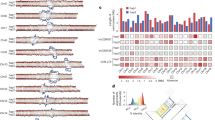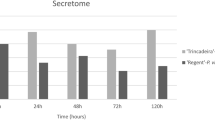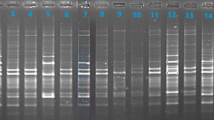Abstract
Grapevine is an important commercial crop widely grown in the world. However, grapevine cultivation has long been seriously threatened by grapevine downy mildew caused by Plasmopara viticola. Screening the resistance resources and identifying the resistance germplasm is the key to improve the resistance of cultivars to P. viticola. East Asia is one of the three origin regions of wild grapevine (North America, Eurasia and East Asia), and many varieties have strong disease resistance. In present study, we selected nine wild East Asian grape vines and selected three of them with the highest P. viticola resistance to construct genetic populations. Genotyping by Targeted Sequencing (GBTS) is a high-throughput and cost-effective technology for sequencing specific genome regions, and its application in genetic population analysis and disease resistance related markers identification has revealed that may be abundant P. viticola-resistant germplasm in East Asian grapes. Our sequencing data and disease resistance grade data provided a valuable reference for mining downy mildew resistant germplasm of East Asian grape and breeding resistant varieties.
Similar content being viewed by others
Background & Summary
The grapevine belonging to the Vitis genus of the Vitaceae family, which is rich in nutrients and is one of the most important horticultural crops in the world1,2. They are classified into three groups based on their geographical distribution and ecological characteristics: North American, Eurasian, and East Asian3,4. Vitis vinifera is the only species in the Eurasian grape. Vitis vinifera and its hybrid cultivars are widely planted around the world and are absolutely dominant among the cultivars3.
Most grapevine cultivars are susceptible to many diseases, especially downy mildew (DM). Plasmopara viticola (Pv), the pathogen of DM, can infect leaves, fragile shoots, tendrils, young fruits, inflorescences, and other tender tissues of grapevine. Serious infection can cause wilting or death of the vine, resulting in a considerable decrease in production5. Fungicides are commonly utilized for the management of P. viticola, however, their extensive use can result in the development of pathogen resistance. Overreliance on fungicides not only increases costs but also contributes to environmental contamination and poses risks to human health. The exploration of Pv resistant germplasm is very important for a deeper understanding of the Pv resistance mechanism and the breeding of Pv resistant cultivars.
Pv originated in North America and was introduced to Europe in the 1870s alongside phylloxera resistant rootstocks6. It has spread worldwide to other viticultural regions through the exchange of grapevine material. DM is currently prevalent in China’s primary grape-producing regions, particularly in the east and south of China7, with grape varieties like Cabernet Sauvignon, Chardonnay, and Merlot being highly susceptible.
China is the source of most East Asian wild grapevines and has an abundance of native grape resources. Many native Chinese grape varieties, particularly V. pseudoreticulata, V. amurensis, and V. davidii are highly resistant to Pv8,9,10,11. The mechanism of how Chinese native grapevine evolved Pv resistance germplasm is very interesting, and relevant research is limited.
Currently, there is limited genomic information available for native Chinese grapevine species. We collected representative wild grapes from various regions of China and used Genotyping by Targeted Sequencing (GBTS) technology to obtain genomic information from them (Fig. 1). The reliability of marker development based on GBTS has been demonstrated in our previous study, but the purpose and data of this study were different from those of our previous study12. The purpose of this study was to provide critical genetic information for the investigation of the mechanism of resistance to Pv of native Chinese grapevine.
The workflow of the data output in this study. The light green box indicates the selection of the Pv resistant parents and the sensitive parent for the hybrid population. The dark green boxes indicate the three hybrid populations and the number of individuals. The dark green boxes indicate the three hybrid populations and the number of individuals. Blue boxes indicate the steps of data output for marker design, sample DNA detection, and phenotypic identification.
Methods
Plant material and resistance evaluation
A total of nine accessions from East Asian grapes with different genetic backgrounds (including V. pseudoreticulata, V. davidii, V. amurensis, V. hancockii, V. piasezkii, and V. yeshanensis) and ‘Cabernet Sauvignon’ (V. vinifera, CS) were selected for identification of Pv resistance. Nine leaf discs with 1-cM diameter were taken from the fourth and fifth fully expanded leaves. The leaf discs were inoculated with Pv as described by Yu et al.9, and then incubated in a controlled environment with a 12-hour photoperiod, 21°C temperature, and 80% humidity. The sporulation density (SPD) approach outlined by Fu et al.10 was used to assess Pv resistance (Fig. 2). The average score of nine leaf discs was continuously collected from the fifth to the seventh day after inoculation. The average score from the fifth to the seventh day after inoculation indicates the resistance level of each grapevine.
Phenotypic evaluation standards for SPD. Sporulation density (SPD) is a semi-quantitative scoring system of P. viticola sporulation density10.
Accessions with high resistance to Pv were selected to create population by -cross-fertilization and selfing. All the vines were planted at the Center for Viticulture and Enology of Shanghai Jiao Tong University (Minhang District, Shanghai City, China).
DNA extraction
Genomic DNA was isolated from young grapevine leaves using CTAB techniques, as reported by Qu et al.13 DNA quality was evaluated using 1% agarose gel electrophoresis and a λ-DNA ladder, while DNA concentration was measured using NanoDrop 2000 (Thermo Fisher Scientific, Waltham, MA, USA).
Target location selection for GBTS and hybridization probe design
The target locations were chosen using the Illumina 20 K Chip and previous GBS sequencing data10,14,15. A total of 20,597 locations were selected according to the following criteria: minor allele frequency (MAF) >0.1, missing data points <5%, and evenly distributed loci throughout the genome. GenoBaits Designer software (MolBreeding Biotechnology Co., Ltd., Shijiazhuang city, Hebei province, China) was used to design a 110 bp probe for each target location. This method has been applied and validated in another of our studies12, but the two works have different research objectives and data.
Library construction, probe hybridization and sequencing
GBTS library construction and probe hybridization were performed as described by Yang et al.16 In short, the library construction process consists of four steps: (1) ultrasound was used to fragment DNA; (2) fragmented DNA was end-repaired and added with an A-tail; (3) adapters with barcode sequences were ligated to the A-tailed segments; and (4) the library was amplified by PCR. After the library construction was completed, probe hybridization was performed using library mixture, library hybridization, target capture, library amplification, purification, and library control. All processes were automated using various instruments to save labor and time.
The Qubit 2.0 fluorometer (Thermo Fisher Scientific, CA, USA) was used to evaluate the quality of the enriched libraries. The samples that passed quality control were loaded into the flow cell and sequenced using PE150 on the MGISEQ-2000 platform (MGI, Shenzhen, China). The sequencing depth was 100×, and the average total amount of sequencing data per sample was about 1 Gbp. mSNPs are multiple SNPs that result from a single probe, including the target SNP and adjacent regions. To make the best use of sequencing data, mSNPs that could exist in each fragment captured by a single probe were identified. The mSNP was developed as reported by Yang et al.16
Data Records
These data files could be divided into 4 categories. They were native grapevine accessions (including 9 East Asian grapevines and 1 Eurasian grape V. vinifera ‘Cabernet Sauvignon’), hybrid population of V. viniera ‘Cabernet Sauvignon’ and V. amurensis ‘Shuanghong’ (CS × SH), hybrid population of V. viniera ‘Cabernet Sauvignon’ and V. pseudoreticulata ‘Huadong1058’ (CS × HD), and self-inbred population of V. davidii ‘Huiliang’ (HL selfing). The names and category details of these data files are provided in Supplementary Table 1. The SNP information details of all samples are provided in Supplementary Table 2. All Supplementary Table files can be accessed through Figshare at https://doi.org/10.6084/m9.figshare.28504721.v117.
All the GBTS raw data of 160 grapevines have been deposited in the NCBI Sequence Read Archive (SRA) (https://www.ncbi.nlm.nih.gov/) with the accession number SRP53944918 under BioProject accession PRJNA1174865.
Technical Validation
Population construction and Pv resistance evaluation
The Pv resistance of all the selected native grapevine accessions was significantly higher than the resistance of CS, and there was also extremely resistant accession like ‘Huadong1058’ (V. pseudoreticulata, HD) that was completely unable to inoculate Pv (Fig. 3a). HD, ‘Huiliang’ (V. davidii, HL), and ‘Shuanghong’ (V. amurensis, SH) was selected to create population. HD and SH were used as male parents to cross with the susceptible variety CS. HL was self-pollinated to create a population.
Plasmopara viticola resistance statistics. (a) Disease resistance indices of 9 varieties/accessions of East Asian grape and Cabernet Sauvignon (V. vinifera). (b) Distribution of disease resistance level in the progeny of the three hybrid populations. The boxes in the boxplot are 1/4 and 3/4, respectively, and the black horizontal lines are medians. The density distribution is shown on the right side of the boxplot. The Y-axis indicates the Pv resistance level.
Fifty offspring of each population were selected. The resistance of the progeny exhibited continuous variation and followed a quantitative trait distribution. The resistance level distribution range of the three populations was different: ‘CS × SH’ population ranging from 3.31 to 8.90 with the mean value of 6.41, ‘CS × HD’ population ranged from 6.09 to 9.00 with an average of 7.55, and ‘HL × HL’ population ranged from 2.11 to 9.00 with an average of 5.91 (Fig. 3b).
Sequence alignments and SNP calling
To quickly identify the SNP information of grapevine, CS, HD, HL, SH, and the three populations were tested by the GBTS method to obtain all types of sequencing data, fastp software (version 0.20.0, https://github.com/OpenGene/fastp) was used to perform the following operations: removal of adapter sequences, elimination of paired reads if more than 10% of the read length is comprised of N bases, and exclusion of paired reads with over 40% of low-quality bases (Q value ≤ 20) in the read length.
The paired-end reads of targeted sequencing were aligned to the Vitis vinifera 12X.2 (vitviv2) genome using Burrows-Wheeler Aligner (BWA, version 0.5.9-tpx). A total of four individuals and three populations sequencing samples were analyzed. For all samples, the average Q20 and Q30 were 97.15% and 90.24%, respectively, the GC content was 40.08%, and the average alignment rate was 99.72%. Notably, HL and its selfing population have the highest Q20 and Q30.
Samtools (v0.1.18), and Genome Analysis Toolkit (GATK, v4.2.1.0) were used for BAM file handling, base recalibration, calling variants and variants filtration, respectively. To call variants, the HaplotypeCaller module of the GATK software was employed, with the following detection parameters:
-dcov 1000000 -minIndelFrac 0.15 -glm BOTH -l INFO
Subsequently, the VariantFiltration module was utilized for filtering, applying the following filtering parameters:
–filterExpression “MQ0 > = 4 & & ((MQ0 / (1.0 * DP)) > 0.1) “–filterName “HARD_TO_VALIDATE”–filterExpression “DP < 5 || QD < 2”–filterName “LOW_READ_SUPPORT”
To extract the genotype information for SNP positions from the above alignment and mutation detection results, the following criteria were applied:(1) If the coverage depth of a sample at a specific SNP position is less than 5X, indicating insufficient sequencing depth, that position is treated as missing and denoted as ‘NA’ in the table. (2) If a sample exhibits a mutation at a specific SNP position, the determination of genotype depends on the mutation frequency. If the mutation frequency is greater than or equal to 0.8 or less than or equal to 0.2, the position is classified as homozygous. If the mutation frequency falls within the range of 0.2–0.8, the position is considered a heterozygous mutation, provided that each allele has a minimum of 4 supporting reads. Otherwise, the position is treated as missing and represented as ‘NA’ in the table. (3) The final summary compiles the genotype results for all SNP positions across the samples (Fig. 4).
Code availability
Sofware and their versions used for GBTS-seq analysis were described in Methods. No custom code was used to generate or process the data described in the manuscript.
References
Bharati, R., Sen, M. K., Severová, L., Svoboda, R. & Fernández-Cusimamani, E. Polyploidization and genomic selection integration for grapevine breeding: a perspective. Front. Plant Sci. 14, 1248978 (2023).
Zhang, X. M. et al. Identification of potential key genes in resveratrol biosynthesis via transcriptional analyses of berry development in grapevine (Vitis spp.) genotypes varying in trans-resveratrol content. Fruit Research 2, 6 (2022).
Lai, C. et al. The Single-Stranded DNA-Binding Gene Whirly (Why1) with a Strong Pathogen-Induced Promoter from Vitis pseudoreticulata Enhances Resistance to Phytophthora capsici. Int. J. Mol. Sci. 23, 8052 (2022).
Ma, Z. Y. et al. Phylogenomics, biogeography, and adaptive radiation of grapes. Mol. Phylogen. Evol. 129, 258–267 (2018).
Sapkota, S. et al. Construction of a high-density linkage map and QTL detection of downy mildew resistance in Vitis aestivalis-derived ‘Norton’. Theoretical and applied genetics 132, 137–147 (2019).
Yu, S. et al. A Comparison of Three Types of “Vineyard Management” and Their Effects on the Structure of Plasmopara viticola Populations and Epidemic Dynamics of Grape Downy Mildew. Plants 11, 2175 (2022).
Yin, L., Zhang, Y., Hao, Y. & Lu, J. Genetic diversity and population structure of Plasmopara viticola in China. Eur. J. Plant Pathol. 140, 365–376 (2014).
Wan, Y., Schwaninger, H., He, P. & Wang, Y. Comparison of resistance to powdery mildew and downy mildew in Chinese wild grapes. Vitis-Geilweilerhof 46, 132 (2007).
Yu, Y., Zhang, Y., Yin, L. & Lu, J. The Mode of Host Resistance to Plasmopara viticola Infection of Grapevines. Phytopathology 102, 1094–1101 (2012).
Fu, P. N. et al. Identifying Plasmopara viticola resistance Loci in grapevine (Vitis amurensis) via genotyping-by-sequencing-based QTL mapping. Plant Physiol. Biochem. 154, 75–84 (2020).
Huang, X. et al. Detection and Characterization of Carboxylic Acid Amide-Resistant Plasmopara viticola in China Using a TaqMan-MGB Real-Time PCR. Plant Dis. 104, 2338–2345 (2020).
Yang, B. H. et al. Identification of sex determination locus and development of marker combination in Vitis based on genotyping by target sequencing. Fruit. Research 3, 31 (2023).
Qu, X. P., Lu, J. & Lamikanra, O. Genetic diversity in Muscadine and American bunch grapes based on randomly amplified polymorphic DNA (RAPD) analysis. J. Am. Soc. Hort. Sci. 121, 1020–1023 (1996).
Fu, P. N. et al. Cgr1, a ripe rot resistance QTL in Vitis amurensis ‘Shuang Hong’ grapevine. Horticulture Research 6, 67 (2019).
GrapeReSeq_Illumina_20K. Plant and Fungi Data Integration https://urgi.versailles.inra.fr/Species/Vitis/GrapeReSeq_Illumina_20K (2018).
Yang, L. et al. Chromosome-level genome assembly and annotation of the native Chinese wild blueberry Vaccinium bracteatum. Fruit Research 2, 8 (2022).
Yang, B. H. A Dataset of SNPs Related to Downy Mildew Resistance in East Asian Grape Based on GBTS. Figshare. Dataset. https://doi.org/10.6084/m9.figshare.28504721.v1 (2025).
NCBI Sequence Read Archive https://identifiers.org/ncbi/insdc.sra:SRP539449 (2024).
Acknowledgements
This work was supported by Key Research and Development Program of Xinjiang Autonomous Region (Grant No. 2022B02045-1-2), National Natural Science Foundation of China (Grant No. 32272652), China Agriculture Research System of Ministry of Finance (MOF) and Ministry of Agriculture and Rural Affairs (MARA) of the People’s Republic of China (CARS-29-yc-5 & CARS-30-5), Safe Conservation and Collection of Germplasm Resources of Jujubes and Grapes, Identification of Resources, Reproduction Cataloging and Entry into the Nursery (19221876), and overseas high-level talent introduction project of fruit research institute, Shanxi academy of agricultural sciences (Shanxi agricultural university) (GSS-HT-20190702).
Author information
Authors and Affiliations
Contributions
F.P. and L.J. designed the research and secured funding for the project. Y.B., F.P., D.Z. and Z.Q. prepared plant samples and performed the Pv resistance evaluation. L.C., L.R., G.Q. and L.J. analyzed the GBTS data. Y.B. wrote the manuscript.
Corresponding author
Ethics declarations
Competing interest
The authors declare no competing interests.
Additional information
Publisher’s note Springer Nature remains neutral with regard to jurisdictional claims in published maps and institutional affiliations.
Rights and permissions
Open Access This article is licensed under a Creative Commons Attribution-NonCommercial-NoDerivatives 4.0 International License, which permits any non-commercial use, sharing, distribution and reproduction in any medium or format, as long as you give appropriate credit to the original author(s) and the source, provide a link to the Creative Commons licence, and indicate if you modified the licensed material. You do not have permission under this licence to share adapted material derived from this article or parts of it. The images or other third party material in this article are included in the article’s Creative Commons licence, unless indicated otherwise in a credit line to the material. If material is not included in the article’s Creative Commons licence and your intended use is not permitted by statutory regulation or exceeds the permitted use, you will need to obtain permission directly from the copyright holder. To view a copy of this licence, visit http://creativecommons.org/licenses/by-nc-nd/4.0/.
About this article
Cite this article
Yang, B., Li, C., Li, R. et al. A Dataset of SNPs Related to Downy Mildew Resistance in East Asian Grape Based on GBTS. Sci Data 12, 619 (2025). https://doi.org/10.1038/s41597-025-04765-8
Received:
Accepted:
Published:
DOI: https://doi.org/10.1038/s41597-025-04765-8







